It was a wet and windy night, but no damage done as far as we were concerned, however on the road outside the caravan park there were several fallen tree branches which the emergency services were clearing away as we left on our mini-bus tour at 9am.The caravan park runs a daily 3 hour bus tour which we thought would give us some local insight to Broken Hill's history and attractions.
We had read yesterday in the Silverton School about Alma Cowie (she was only 12 years old), who was killed while on the train from Broken Hill to a New Year's Day picnic at Silverton on 1 January 1915. Depending on your view, she was either the first Australian to be killed by the enemy on home soil in World War I or the first Australian to fall to an act of terrorism. And today our first stop was at the point where the shooting took place. Under the Ottoman flag, Gool Mohamed (an ice cream vendor) and his older accomplice Mulla Abdulla fired on the train. They hit 10 people and 3 died. Read more here.
Much of the overnight rain had cleared, but there was still light drizzle at times, making it to hard to see some of the features being pointed out by our guides, but the tour was still quite interesting and we stopped at the Broken Hill Airport for morning tea.
The Airport terminal is quite small, but features some Pro Hart paintings on the wall. We planned to come back to the airport ourselves after the tour as that's where the Royal Flying Doctor Service is based and it is open for tours. Last stop on the tour was the now defunct Junction Mine. Here one of our tour guides explained the old mining process and described the hardship the early miners faced.
After the tour we had a sandwich lunch in the caravan and as planned, returned to the RFDS base at the Airport. The static display area was complemented by an interesting video in their theatrette and a guided tour of the small operations area and aircraft hangar. Gone in the operations area is the old HF transmitters as now almost exclusively calls come in via telephone rather than radio, such is the change in communication technology. Interesting in the display area was a chair on which the Queen had sat on a visit to the RFDS and her signature along with Phillip's in the visitor book was 18 March 1954, just one day after my birthday!
Another interesting display was the body chart, which was a simple mapping aid that had been devised by one of the RFDS nurses so those calling in could accurately describe where pain was in the body.
If you look at the $20 you will see an image of John Flynn, founder of the RFDS, but if you look closely you'll see the body chart with numbers within a grid.
Next we visited the Miners Memorial which sits atop the giant mullock heap which is a dominant backdrop to the Broken Hill city centre. Along one side within the Memorial are the names of all miners who have died in Broken Hill mines engraved on glass panels accompanied by White Roses.
At the same location is an impressive building which houses a café and function centre, but it's not operating because of some legal/insurance dispute, which is disappointing as it would be a great place to enjoy the view across the city while enjoying a meal. They hope to reopen it soon. Adjacent to that building is an overside red wooden park bench, which as you can see from the photo makes Lucinda look like a dwarf.
Last stop before returning 'home' was Sturt Park where there is a memorial to the band on the Titanic. It was funded by local Broken Hill bands and unveiled less than two years after the Titanic sunk.
For our last dinner in Broken Hill we had pan fried pork schnitzels, a Greek salad with a glass of white wine followed by banana and ice-cream and finished off with a cup of tea accompanied with home made chocolate slice.

 Broken Hill, New South Wales, Australia
Broken Hill, New South Wales, Australia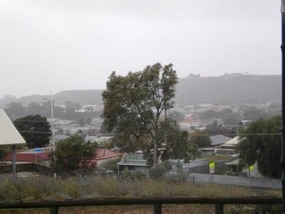
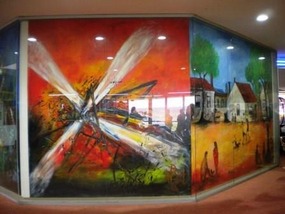
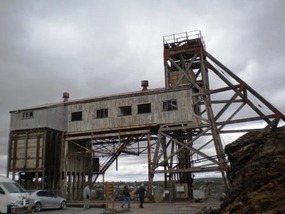

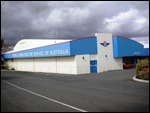

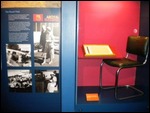
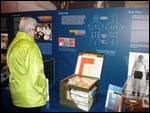
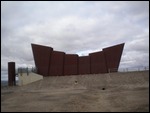
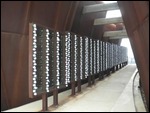
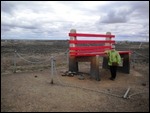
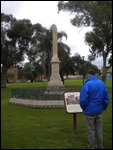
2025-05-22